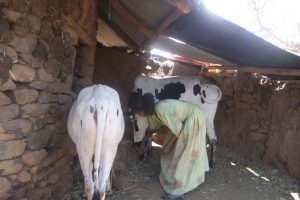The share of households consuming dairy products in Addis Ababa has dropped by 11 percentage points since the COVID-19 crisis, seemingly linked to perceived risks of consuming dairy products. All income groups declined their consumption, except for the richest quintile where the share of consuming households changed little.
More than half of the consumers in Addis Ababa reported to avoid the consumption of animal-source foods due to the COVID-19 risk. There is however strong heterogeneity in the type of dairy products that are affected. We find a significant drop in the demand for raw milk, a steady - or even higher - consumption of pasteurized milk, and an increase in purchases of powdered milk, as the latter two are considered safer by consumers.
This change in consumer preferences is passed down through the dairy value chain with those distributors, collectors, and rural farmers involved in the raw milk value chain severely affected by the COVID-19 crisis. The latter are less able to sell their milk. As a consequence, butter prices significantly decreased in rural areas, due to more processing of milk and therefore an excess butter supply. Some dairy households further indicated losses, and some indicated increasing their own consumption.
Prices of liquid milk stayed stable in urban retail markets and producer prices for those producers that supply dairy processing plants did not change. Marketing margins did not change very much either.
On the input side, widely used feed prices – wheat bran and oilcakes in particular – did temporarily increase by 30 to 40 percent but prices came down because of the reduction in demand linked to the start of rain and the shift to grazing for cow feed for some producers. Prices of veterinary medicines increased also by 20 percent since the COVID-19 crisis started, possibly because of interrupted international supply chains for such medicines.
Dairy production has not been affected by the crisis. Read full article.
